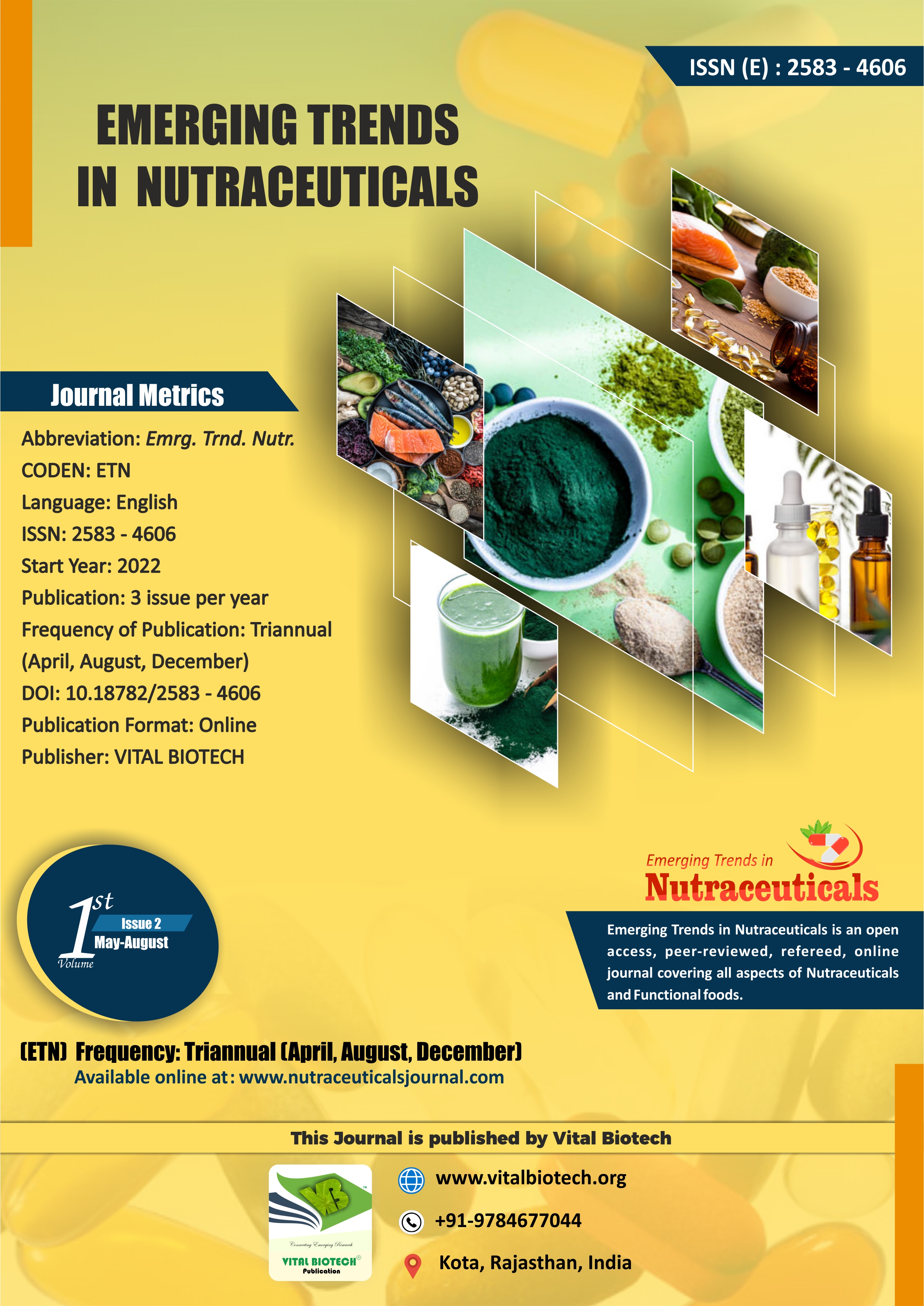
Archives
Emerging Trends in Nutraceuticals (ETN)
Year : 2022, Volume : 1, Issue : 2
First page : (14) Last page : (25)
Article doi: : http://dx.doi.org/10.18782/2583-4606.108
Variation of Different Drying Characteristics of Moringa Leaves on Different Drying Methods
Aakriti Singh*, Yasawant Kumar Patel and Soumitra Tiwari
Department of Food Processing and Technology,
Atal Bihari Vajpayee Vishwavidyalaya, Bilaspur, Chhattisgarh
*Corresponding Author E-mail: aakriti.singh.sisodiya9@gmail.com
Received: 13.04.2022 | Revised: 27.06.2022 | Accepted: 11.07.2022
ABSTRACT
Moringa oleifera, one of the multipurpose utility trees, is widely cultivated in different regions of India and throughout the World. M.o.l. belongs to M.o.l family and known with the various names according to their origin and local dialect. Different parts of M.o.l.tree are widely used as source of as multi-nutrition, multi-vitamins and medicinal compounds. M.o.l. are one of the edible parts of the tree carrying a bundle of nutrients and multi-vitamins. The present investigation focused on evaluating the physic-chemical properties of M.o.l. leaves, study of drying behaviour of M.o.l. using different drying methods namely shade drying, hot air oven drying (40, 50, 60 & 70˚C) and microwave drying (300, 450 & 600 W). Also, analysis of the nutritional and proximate composition such as fat, protein, ash, fiber, carbohydrate and energy value, mineral fractions viz. calcium, magnesium, iron and zinc and vitamins of dried M.o.l. were carried out. The weighted M.o.l. were taken and dried in different drying methods and conditions. The weight reduction of the samples was measured periodically until the constant weights were observed.
The minimum drying time required in microwave drying takes 12-16 minutes, and the maximum drying time is required in the shade drying i.e., 34 hours. Shade drying performance was better as compared to sun drying but required comparatively longer drying time. In a hot air oven 50˚C drying temperature was found to be optimum with better quality retention but comparatively higher drying as compared to microwave drying. During microwave drying, 300 Watt was found to be optimum for drying of moringa leaves.
Keywords: Moringa, Healthy diets, Diseases, Microwave.
Full Text : PDF; Journal doi : http://dx.doi.org/10.18782
Cite this article: Singh, A., Patel Y.K., & Tiwari, S. (2022). Variation of Different Drying Characteristics of Moringa Leaves on Different Drying Methods, Emrg. Trnd. Nutr. 1(2), 14-25. doi: http://dx.doi.org/10.18782/2583-4606.108

